
What is an audit trail?
Finish your demo booking
Looks like you haven't picked a time for your personalized demo. Pick a time now.
Select date and time
Every document has a history. Keep track of user activity and key events with real-time tracking tools that ensure regulatory compliance.
No credit card required





An audit trail is a step-by-step history of every action taken on a document, from creation to completion.
Typically, audit logs contain timestamps, user identification, and detailed records of user activities over the lifespan of the document. This may include accessing a document, adding or deleting text, e-signing a document, and more.
Audit trail data can also be broken into multiple components, like a data access log or a version history tool that records specific user activity. This subdivision of user activity can be useful during internal audits or when working to meet specific regulatory requirements.
At PandaDoc, audit trails also provide a step-by-step history of document status changes. Use these designations to better understand where your document sits within your pipeline and what actions need to be taken to move it toward completion.
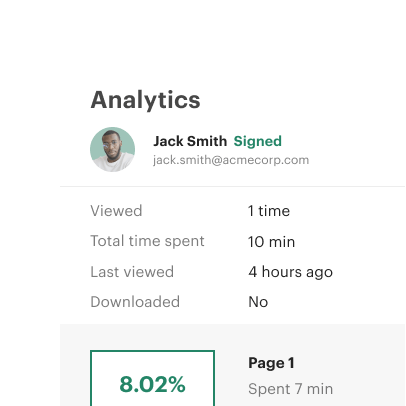
Show potential customers what they’re buying. Accelerate purchasing decisions by presenting costs with clarity.
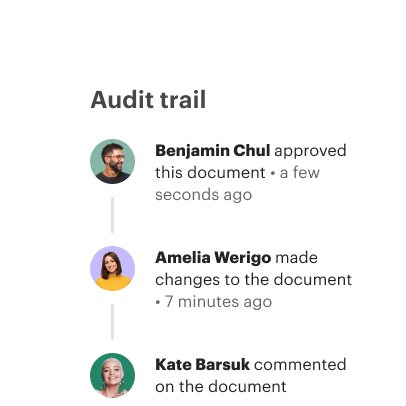
Use audit trail records to check for document edits, suggestions, and unresolved issues prior to e-signing.
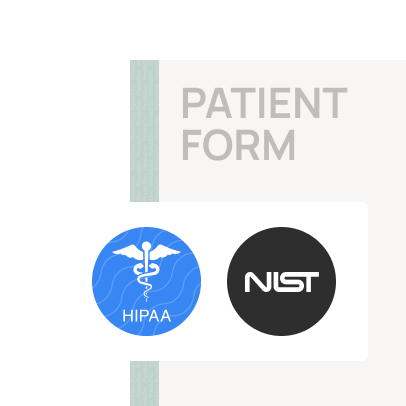
Validate user access to sensitive information while aligning with cybersecurity best practices.
Want to know what happens after you hit send?
With PandaDoc, you can see exactly how recipients are interacting with your documents and what sequence of events moves the deal down the pipeline.
If the process stalls, audit trail information can help you follow up at the right time and push the deal over the finish line.

Consolidated audit trails and electronic records are a great way to keep your sensitive data secure.
PandaDoc audit trails act like a security camera for your documents, so you’ll always have a record of who accessed or changed your documents.
Combine this information with internal controls to restrict access or limit document functionality for unauthorized users.

Say goodbye to compliance headaches.
The recordkeeping and ledger entries provided by an audit trail make it easy to align with strict industry standards, even in critical areas like healthcare and finance.
Because every document has a detailed record of all activity, you’ll always be ready for external audits and regulatory checks.
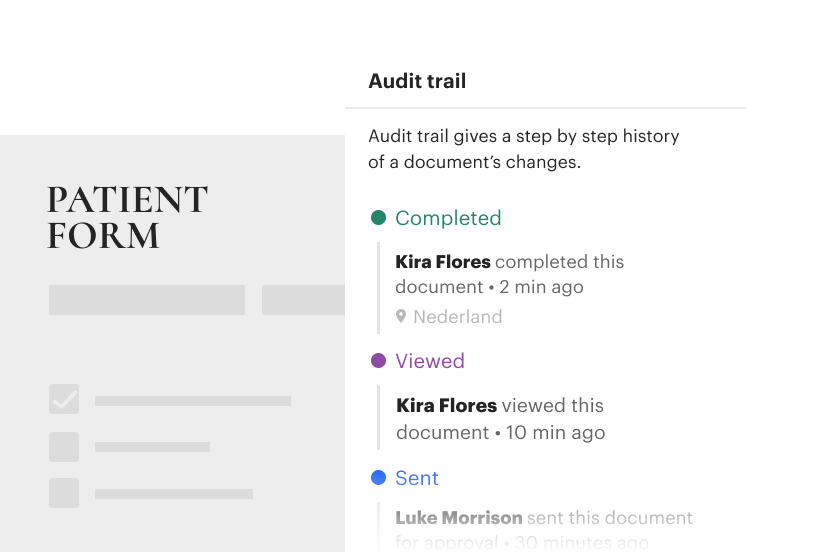
Make your document process smoother and faster by identifying bottlenecks.
As documents move through your organizational pipeline, use audit trail data to find trouble spots in your process and speed things up.
Streamline approvals, simplify routing, and discover automation opportunities without compromising access control or information security.
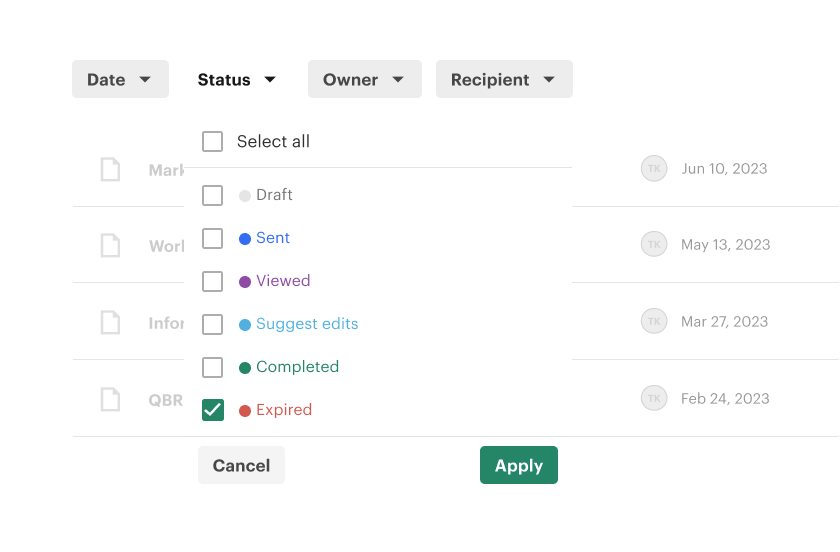
Even though proposals are about making a great impression, it can be difficult to know how and when to follow up.
With audit trails, you see who viewed your proposals, when they saw them, and which sections they’re most interested in.
Use those insights to tailor your follow-up. Address specific pain points, and increase your chances of closing the deal.

Contracts are serious business. It’s important to know who’s making changes and when.
Audit trails in PandaDoc give you a clear picture of every edit, approval, status change, and electronic signature. This approach ensures that everyone is on the same page about critical business activities and helps prevent disputes and misunderstandings during negotiations.
You can even combine audit trails with other PandaDoc tools like user authentication and ID challenges so that only authorized users access critical documents.

In many business relationships, a quote is a starting point for larger negotiations.
With an audit trail, you can gain a better understanding of how stakeholders are interacting with your document and who might be operating behind the scenes.
Change your approach based on evolving information so that you’re always prepared to offer the best deal.

Essential documents like purchase orders and financial statements often contain confidential information.
Audit trails can provide access logs so that you have a clear understanding of who accessed your document and when.
Combined with other tools, audit trails are a great way to secure financial information and plug holes in the distribution process.

Get personalized 1:1 demo with our product specialist.
An audit trail is a history of your document’s journey through the organizational lifecycle.
With it, you can see how documents were handled, when their status changed, and how certain issues were resolved.
Keeping track of these changes can help teams identify outstanding issues, keep teams aligned, and provide an opportunity to improve future processes.
Audit trails comprise a large umbrella of functionality, including the ability to record user IDs and track document activity.
PandaDoc splits these capabilities across a number of tracking tools, including each of the following:
This toolkit can also be combined with additional security features like 2FA and ID challenges to further secure key information like financial data or business activity.
Sure! Take a look at our support documentation for a closer look at a document audit trail. This feature is visible on the right sidebar and organizes activity by document status.
Other tracking features, including document analytics and version history are also available within PandaDoc, but are found in separate locations.
Unfortunately, no.
Our audit trail software is integrated into the full PandaDoc platform and can’t be exported separately.
However, it’s possible to download digital signature certificates for signed documents, which offers some unique, identifying information about signers.